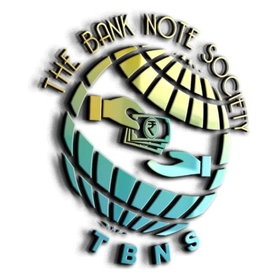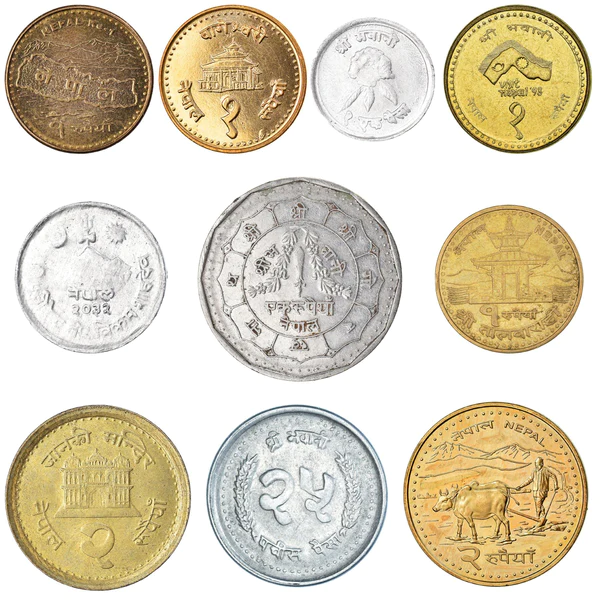Ever wondered about the coins jingling in your pocket? Those little metal disks have a story to tell, especially if they're from Nepal. The history of Nepali coins goes back over 2,500 years, from the first coins of the Gupta Empire to the modern coins of today.
You’ve probably seen or used some of the iconic Nepali coins yourself. The mohar coin with Prithvi Narayan Shah’s face, the ‘tree’ mohar, the ‘bird’ mohar, the ‘lion’ mohar—these coins are deeply woven into Nepal’s history and culture. The diverse designs and motifs on Nepali coins reflect the equally diverse ethnic groups, cultures, and histories within Nepal.
So next time you get some coins as change, take a closer look. You might just discover a new appreciation for the historical and cultural significance behind each little metal disk. The coins tell a story of Nepal that's as rich and vibrant as its people.
Ancient Coinage of Nepal
Nepal has a long history of coinage dating back to the Gupta period in the 5th century AD. The earliest coins were crude copper coins with just a symbol, but over time the designs became more intricate.
Ancient Coins of the Malla Kingdom
The Malla kings who ruled the Kathmandu Valley from the 12th to 18th centuries, produced some of the most stunning coins. These coins often featured the trident symbol, the endless knot, and images of the gods Vishnu, Shiva, and Lakshmi.
The silver Mohar coins, in particular, showcase intricate carvings and beautiful calligraphy with the king’s name, the date, and the place of minting. Mohar coins came in several denominations, with the largest Mohar worth 64 lower denomination coins. These highly prized coins are avidly collected today.
Coins of the Shah Dynasty
After Prithvi Narayan Shah united Nepal, the Gorkha rulers issued gold coins called Ashrafi and silver coins called Mohar. The earliest Gorkha coins replicated Mughal and British Indian coinage but over time developed their own unique style featuring Hanuman, the loyal servant of Lord Rama.
In 1901, Nepal started issuing nickel coins with the portrait of the ruling Shah king. These coins reflected the growing political and economic influence of the British Raj in the region.
Nepal’s long numismatic history provides a glimpse into the changing power dynamics and artistic influences in the region. The exquisite details and metalwork of Nepal’s ancient coinage is a testament to the wealth, skill, and reverence of bygone kingdoms. Though styles and rulers have changed over centuries, coins remain an integral part of Nepal’s cultural heritage.
Medieval Nepalese Coinage Under the Malla Kings
The Malla dynasty ruled over Nepal during the Medieval period from the 12th to 18th century. During their reign, Nepalese coinage saw major developments.
The Malla kings introduced copper and silver coins for the first time. The earliest Malla coins were crude, irregularly shaped copper coins with a hole in the center so people could string them together. These were replaced by round copper coins with the king's name and title inscribed on them.
Silver coins, called Mohar, were introduced in the 14th century. They featured decorative symbols of the sun and moon as well as the king's name and title. The silver Mohar became Nepal's main currency for centuries.
The Malla era also saw foreign influences on Nepal's coinage. Mughal and Afghan coins circulated alongside Nepali coins. Some Malla kings even issued coins with Arabic inscriptions to appeal to Mughal rulers.
The shapes, sizes, and metal of coins varied across different Malla kingdoms. For example, square copper coins were issued in Kathmandu while round ones were used in Patan and Bhaktapur. The diversity highlights the cultural and political differences between the kingdoms during that period.
Overall, Nepali coinage flourished under the Malla dynasty. Their coins are a glimpse into the medieval history, culture, and politics of Nepal. For numismatists and collectors, Malla era coins remain prized items, providing a tangible link to Nepal's rich past.
The Unification of Nepal and the Shah Dynasty Coins
The Shah dynasty ruled Nepal for over 200 years, from 1768 to 2008. During this time, they introduced their own coinage that reflected the unification of Nepal.
The Early Shah Coins
When Prithvi Narayan Shah conquered the Kathmandu Valley in 1768 and unified Nepal, he replaced the independent coinages of the three kingdoms with a single coinage of copper dams and silver mohars. The earliest Shah coins resembled those of the Malla dynasty, with minor changes to the design and legends.
Standardization Under Rana Bahadur Shah
King Rana Bahadur Shah standardized Nepal’s coinage around 1800. He introduced a copper coin called the Chhetris, along with silver mohars in several denominations. The Chhetris copper coins were roughly the size of a modern penny and featured an elephant on one side and the king’s name on the other. The mohars featured depictions of the king, crown, and trident, a symbol of the Shah dynasty.
Later Coins and the End of the Monarchy
Successive Shah kings continued issuing coins in copper, silver, and gold until the monarchy was overthrown in 2008. In the early 20th century, Nepal started producing nickel coins to supplement the copper coins. The last king, Gyanendra Bir Bikram Shah Dev, issued the final coins of the Shah dynasty in 2001 before the monarchy was abolished.
The coins of the Shah dynasty provide a glimpse into the history of a unified Nepal. From the early crude coins to the more elaborate and decorative issues of later years, these coins are a symbol of the longevity and cultural influence of the Shah kings over Nepal. Collecting Shah dynasty coins is a popular pastime for numismatists interested in Himalayan kingdoms.
Early Nepalese Coinage Under the Rana Regime
The earliest coins in Nepal were introduced during the Rana regime, which lasted from 1846 to 1951. The Ranas were Prime Ministers who held power over the figurehead Shah monarchy. They modernized Nepal’s economy, and part of that included establishing a coinage system.
Early Copper Coins
The first coins issued were copper coins called mohars in the 1850s. These small coins were useful for small transactions in the bustling marketplaces of Kathmandu. The mohars featured traditional Nepali designs and the words “Sri Sri Sri” and “Nepal Tarai”, indicating they were valid for trade in the Terai region along the border with India.
Silver Coins
In the 1880s, the first silver coins were minted, called rupees. One rupee was equivalent to 64 paisa. The rupee coins depicted King Surendra Bikram Shah on one side and the date on the other side. These silver rupees were modeled after the Indian rupee to facilitate trade between the two nations.
Gold Coins
For larger transactions, gold coins called ashrafis were used, starting in the early 1900s. One gold ashrafi was worth 16 silver rupees. These octagonal gold coins featured intricate engravings of the royal coat of arms, the king’s name, and the coin’s value in Nepali on one side. The other side depicted the Hindu deity Lakshmi, goddess of wealth.
The Rana regime was overthrown in 1951, but their lasting legacy on Nepal’s coinage system and economy remains. The coins they introduced formed the basis for Nepal’s modern currency, still known as the Nepalese rupee today. Studying these early coins offers a glimpse into the trade, values, and power structures in Nepal during this pivotal time in its history.
Modern Coins of Nepal
Nepal first started issuing coins after Gorkha conquered Nepal valley in 1768. The early coins were called Muhar and were made of silver. Gold coins called Mohar were also issued, especially during the rule of King Surendra Bikram Shah in the 19th century.
Modern Coins of Nepal
The first coins of the modern era were introduced in 1912 during the rule of King Tribhuvan Bir Bikram Shah. These coins were called ‘Gorakh’ and were made of silver. The front featured the king's portrait and the back displayed the coat of arms which included crossed kukris, the royal crown and sun and moon symbols.
In 1955, Nepal issued its first decimal coinage consisting of aluminum and bronze coins in denominations of 5 and 10 paisa, and 1⁄4, 1⁄2 and 1 rupee. These coins featured the same coat of arms on the obverse (front) and the denomination on the reverse (back) side. The aluminum coins were round while the bronze coins were scalloped (wavy edges).
In 1973, nickel-brass coins were introduced in denominations of 5 and 10 paisa, and 1, 2 and 5 rupees. The obverse featured the king's portrait and the reverse displayed the denomination surrounded by the coat of arms. These coins were round in shape.
Currently, Nepal has coins in denominations of 1, 2, 5 and 10 rupees. The obverse features the current king's portrait and the reverse displays the denomination along with the year of issue. The 1 and 2 rupee coins are made of nickel-plated steel while the 5 and 10 rupee coins are bi-metallic, with a copper-nickel ring and aluminum-bronze center.
The modern coins give us a glimpse into Nepal’s history and cultural heritage. The symbols and portraits displayed on the coins represent the nation’s values and changing times. Collecting these coins can be an enjoyable hobby and help preserve an important part of Nepal’s past.
Conclusion
So there you have it, the origin story of the coins that have been jingling in Nepali pockets for centuries. From the earliest copper and silver coins to modern currency, money has come a long way in Nepal. Next time you pay for momos or a bus fare, take a close look at the coins in your hand. Each one represents a piece of history, a reminder of the kings and kingdoms now relegated to textbooks and tales told by your grandparents. The coins may change, but Nepal endures. New currencies will emerge and old ones fade, yet the spirit of barter and exchange remains the same. Money makes the world go round, as the saying goes, even in the Himalayas.



